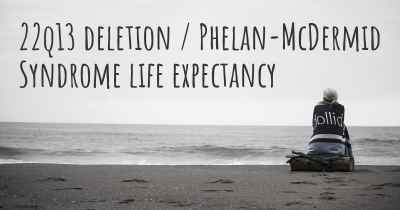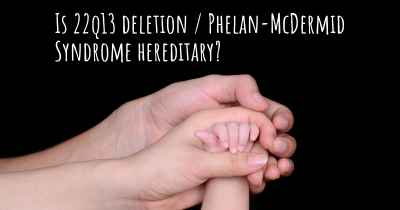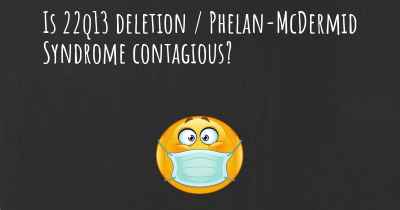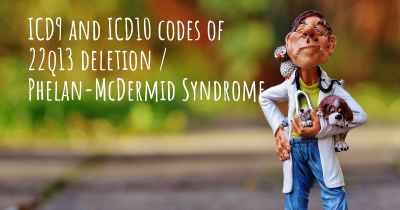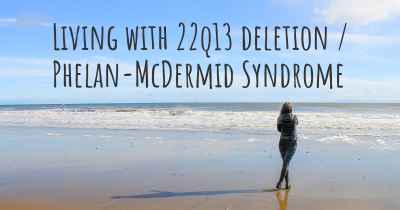Which are the causes of 22q13 deletion / Phelan-McDermid Syndrome?
See some of the causes of 22q13 deletion / Phelan-McDermid Syndrome according to people who have experience in 22q13 deletion / Phelan-McDermid Syndrome
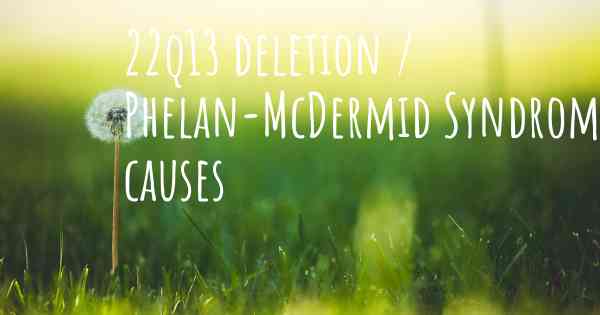
Causes of 22q13 deletion / Phelan-McDermid Syndrome
Phelan-McDermid Syndrome (PMS), also known as 22q13 deletion syndrome, is a rare genetic disorder caused by the deletion or disruption of a small piece of chromosome 22. This deletion affects the terminal end of the long arm of chromosome 22, specifically at the 22q13.3 region. The loss of genetic material in this region leads to the characteristic features and symptoms associated with PMS.
1. Chromosomal Deletion:
The primary cause of Phelan-McDermid Syndrome is a deletion of genetic material on chromosome 22. This deletion can occur spontaneously during the formation of reproductive cells (sperm or egg) or early in embryonic development. In some cases, the deletion may be inherited from a parent who carries a balanced translocation, where a piece of chromosome 22 is rearranged with another chromosome. However, the majority of cases are caused by de novo (new) deletions that are not inherited.
2. SHANK3 Gene Mutation:
The specific gene that is affected by the deletion in Phelan-McDermid Syndrome is called SHANK3 (also known as ProSAP2). The SHANK3 gene provides instructions for producing a protein that plays a crucial role in the development and function of synapses, which are the connections between nerve cells in the brain. The loss of one copy of the SHANK3 gene due to the deletion disrupts the normal functioning of synapses, leading to the neurological and developmental features of PMS.
3. Variability in Deletion Size:
The size of the deletion in Phelan-McDermid Syndrome can vary among individuals. While the typical deletion involves the loss of several genes in the 22q13.3 region, the exact boundaries of the deletion can differ. Some individuals may have larger deletions that encompass additional genes, while others may have smaller deletions that only affect the SHANK3 gene. The variability in deletion size can contribute to the wide range of symptoms observed in individuals with PMS.
4. Genetic Mosaicism:
In rare cases, Phelan-McDermid Syndrome can result from genetic mosaicism. Mosaicism refers to the presence of two or more genetically distinct cell populations within an individual. In the context of PMS, it means that some cells in the body have the typical two copies of chromosome 22, while others have the deletion in the 22q13.3 region. This mosaicism can lead to a milder presentation of the syndrome or make it more challenging to diagnose.
5. Other Genetic Factors:
While the deletion in the 22q13.3 region is the primary cause of Phelan-McDermid Syndrome, other genetic factors may influence the severity and variability of symptoms. Genetic modifiers, such as variations in other genes or regulatory elements, can interact with the deletion and modify its effects. These modifiers may explain why individuals with the same deletion size can exhibit different clinical features and developmental outcomes.
Conclusion:
Phelan-McDermid Syndrome, or 22q13 deletion syndrome, is caused by the deletion or disruption of genetic material on chromosome 22, specifically in the 22q13.3 region. The loss of one copy of the SHANK3 gene within this region is primarily responsible for the neurological and developmental features of PMS. The size of the deletion, genetic mosaicism, and other genetic factors can contribute to the variability in symptoms observed among individuals with Phelan-McDermid Syndrome.
